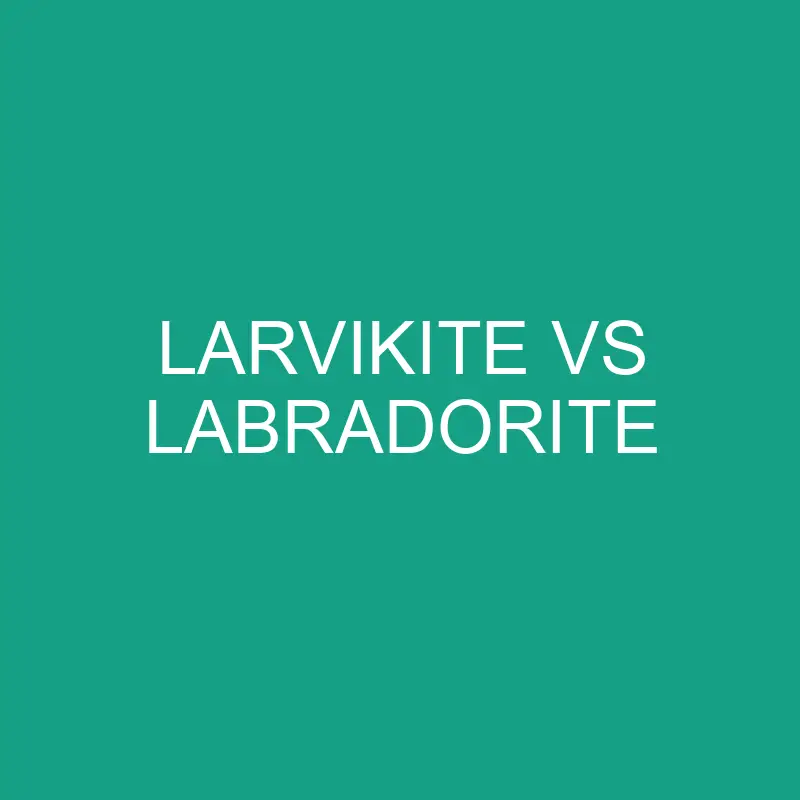A Comparative Exploration of Iridescent Beauties
Gemstones possess a mystique that transcends their physical beauty, and among these enchanting stones, Larvikite and Labradorite stand out for their captivating iridescence. In this comparative exploration, we will delve into the distinct features, origins, and metaphysical properties of Larvikite and Labradorite, two closely related stones that share a mesmerizing play of colors.
Post Contents
Larvikite: The Norwegian Elegance
Origins and Geological Background:
- Composition: Larvikite is a monzonitic feldspar-rich rock, consisting mainly of plagioclase feldspar, nepheline, and various other minerals.
- Color: Larvikite is generally dark, with a predominant gray or black base color.
- Formation: It is part of the igneous rock family, specifically a variety of syenite, and is formed through slow cooling of magma beneath the Earth’s surface.
Physical Properties:
- Color and Appearance: Dark with a distinct silver or blue sheen caused by the presence of iridescent feldspar crystals.
- Transparency: Opaque.
- Crystal Structure: Larvikite lacks a specific crystal structure as it is a rock composed of multiple minerals.
- Hardness: The hardness varies but generally falls between 6 and 7 on the Mohs scale.
Origins and Mining:
- Locations: Larvikite is primarily found in Larvik, Norway, where it gets its name.
- Mining: Extracted through traditional mining methods, Larvikite is renowned for its use in construction and as a decorative stone.
Metaphysical Properties:
- Grounding and Protection: Larvikite is believed to have grounding properties, helping to connect with the Earth’s energies.
- Psychic Abilities: It is also associated with enhancing psychic abilities and providing protection during spiritual work.
Uses in Jewelry and Art:
- Jewelry: While not as commonly used in jewelry as Labradorite, Larvikite is occasionally crafted into beads and cabochons.
- Architectural Uses: Larvikite is often used as a decorative stone in architecture, known for its durability and elegant appearance.
Labradorite: The Enchanting Play of Colors
Origins and Geological Background:
- Composition: Labradorite is a feldspar mineral, part of the plagioclase series, with a specific composition of sodium, calcium, aluminum, silicon, and oxygen.
- Color: Labradorite is typically dark with iridescent flashes of blue, green, yellow, and gold, a phenomenon known as labradorescence.
- Formation: It is formed in metamorphic rocks, often associated with igneous activity.
Physical Properties:
- Color and Appearance: Dark base color with vibrant flashes of iridescence.
- Transparency: Transparent to translucent.
- Crystal Structure: Labradorite has a triclinic crystal structure.
- Hardness: Labradorite has a hardness of 6-6.5 on the Mohs scale.
Origins and Mining:
- Locations: Labradorite is found in various locations, including Canada, Madagascar, Norway, and Russia.
- Mining: Extracted through traditional mining methods, Labradorite has been prized for its use in jewelry and ornamental carvings.
Metaphysical Properties:
- Transformation and Intuition: Labradorite is associated with transformation and is believed to enhance intuition and psychic abilities.
- Protective Energies: It is often considered a stone of protection, deflecting negative energies.
Uses in Jewelry and Art:
- Jewelry: Labradorite is widely used in various forms of jewelry, including rings, necklaces, earrings, and bracelets.
- Carvings and Sculptures: The unique play of colors makes Labradorite a popular choice for ornamental carvings and sculptures.
Comparative Analysis: Larvikite vs. Labradorite
Color and Appearance:
- Larvikite: Dark with a silver or blue sheen.
- Labradorite: Dark with iridescent flashes of blue, green, yellow, and gold.
Transparency:
- Larvikite: Opaque.
- Labradorite: Transparent to translucent.
Crystal Structure:
- Larvikite: Lacks a specific crystal structure as it is a rock.
- Labradorite: Triclinic crystal structure.
Hardness (Mohs Scale):
- Larvikite: Varies but generally between 6 and 7.
- Labradorite: 6-6.5.
Origins and Mining:
- Larvikite: Primarily found in Larvik, Norway. Extracted for use in construction and decoration.
- Labradorite: Found in various locations, including Canada, Madagascar, Norway, and Russia. Extracted for use in jewelry and art.
Metaphysical Properties:
- Larvikite: Grounding, protective, enhances psychic abilities.
- Labradorite: Transformational, intuitive, protective.
Uses in Jewelry and Art:
- Larvikite: Occasionally used in jewelry, more commonly employed in architecture and construction.
- Labradorite: Widely used in various forms of jewelry, as well as ornamental carvings and sculptures.
Conclusion: Choosing Between Larvikite and Labradorite
Larvikite and Labradorite, both boasting a mystical play of colors, offer distinct aesthetics and metaphysical properties. Larvikite, with its subtle silver or blue sheen, is associated with grounding and protection, making it a stone that connects with the Earth’s energies. While not as commonly used in jewelry, it finds its place in architecture, adorning spaces with elegance.
On the other hand, Labradorite, with its vibrant labradorescence, captivates with flashes of blue, green, and gold. Beyond its aesthetic appeal, Labradorite is revered for its transformative and intuitive properties. It is a popular choice in the world of jewelry, where its unique play of colors can be showcased in various designs.
The choice between Larvikite and Labradorite may depend on individual preferences, the desired aesthetic, and the intended use. If you seek a stone with grounding properties and a subtle sheen, Larvikite might be your choice. If you are drawn to the enchanting play of colors and the transformative energies associated with labradorite, it might become a centerpiece in your jewelry collection.
Whether used in jewelry or incorporated into architectural designs, both Larvikite and Labradorite invite you to explore the fascinating realm of stones that go beyond mere adornment, carrying with them a sense of mystery and connection to the energies of the Earth.
